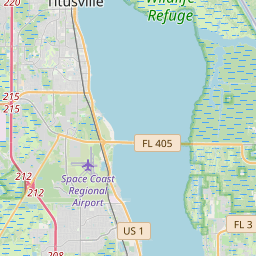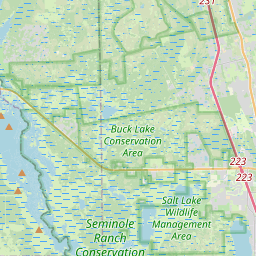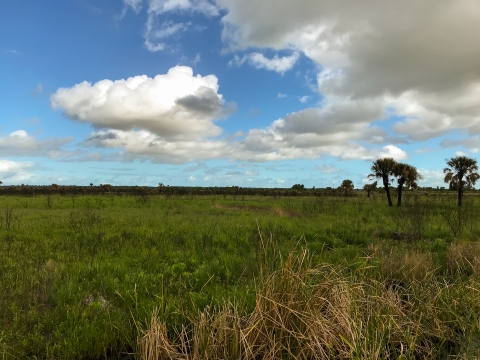St Johns National Wildlife Refuge is closed to public access to protect sensitive bird nesting habitat.
Visit Us
St. Johns National Wildlife Refuge is closed to public access to protect sensitive bird nesting habitat.
Location and Contact Information
- St. Johns National Wildlife RefugeView DetailsC/O Merritt Island National Wildlife Refuge 1963 Refuge Headquarters Road Titusville, FL 32782
About Us
St. Johns NWR was established on August 16, 1971, to provide habitat for threatened and endangered species, specifically for the conservation of the dusky seaside sparrow (Ammodramus maritimus nigrescens). By 1979, surveys determined that the dusky seaside sparrow had declined to less than 20 male birds. The last known sighting of this species in the wild was in 1980. Despite the loss of the dusky seaside sparrow, at least 19 federal and state-listed species and species of management concern are known to occur today at St. Johns NWR. These include four federally listed wildlife species: the wood stork (Mycteria americana) – threatened; crested caracara (Caracara cheriway) – threatened; the eastern indigo snake (Drymarchon couperi) – threatened; and the recently listed eastern black rail (Laterallus jamaicensis jamaicensis).
The St. Johns NWR is managed by staff from Merritt Island NWR. Due to the presence of sensitive bird nesting habitat, and the lack of facilities, the refuge is not open to the public.
Our Species
Despite the loss of the dusky seaside sparrow, the St. Johns National Wildlife refuge still provides important habitat for a wide range of flora and fauna. The refuge provides critical nesting habitat to the eastern black rail (Laterallus jamaicensis jamaicensis) which was listed in October of 2020 as threatened under the Endangered Species Act. In addition, the refuge provides important habitat for over 100 other species of resident and migratory birds, including eastern meadowlarks (Sturnella magna) various species of herons and egrets, neo-tropical migratory birds, as well as raptors like the threatened crested caracara (Caracara plancus). At least 15 species of mammal call the refuge home, including wetland specialist like the round-tailed muskrat (Neofiber alleni) and the marsh rabbit (Sylvilagus bachmani).





















